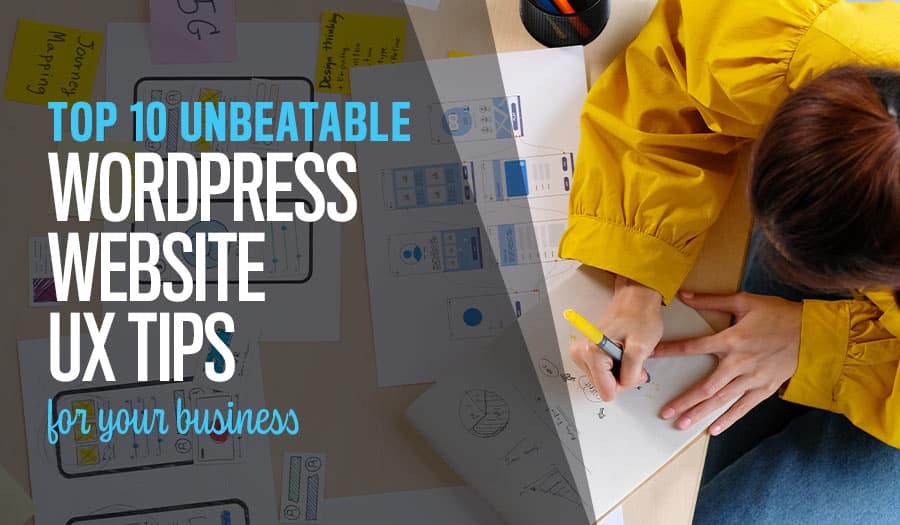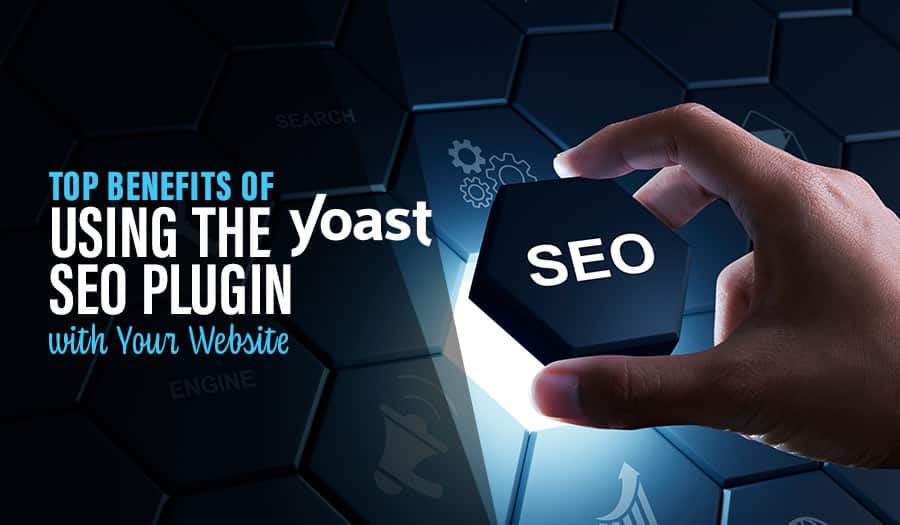You visit a particular website to search for something, but you leave as soon as you land on it due to its slow speed and repulsive design. Bad website user experience, we’ve all been there, haven’t we? Investing in a robust user experience (UX) for your WordPress website can be a game-changer in the online environment. Here are Top 10 Unbeatable WordPress Website UX Tips for your business.
What’s a Website UX?
User experience (UX) is your visitors’ emotions, viewpoints, and feelings when browsing your website. It speaks about the aspects of human-product relationships (think emotive, observational, and pragmatic aspects).
The Benefits of a WordPress Website UX
A professional UX design fulfils your users’ needs and helps them experience a positive customer journey. The users will not have to grope and fumble around your website looking for what they need to solve their pain points.
Once the UX satisfies your customers, your business will start seeing tremendous benefits: a robust UX design can boost your conversions and SEO rankings, thereby bringing in more revenue. It’s also a great way of improving your credibility and trust among your online consumers.
Top 10 Unbeatable WordPress Website UX Tips for your business
Top 10 Unbeatable WordPress Website UX Tips for your business
- Adopt a Mobile-Fist Design
- Optimize Speed
- Beef Up Your Website Security
- Choose an Appropriate Navigation Menu
- Streamline the Navigation Menu
- Employ White (Negative) Spaces
- Use High-Quality Images and Videos
- Use Effective Calls-To-Action (CTAs)
- Use Effective Colors, Motion, and Animation
- Use Social Sharing
How Can You Design a Website UX that Drives Conversions? Now that you know the importance of UX, let’s dive into the sure-fire tips that will help you drive more website engagement and conversions:
1. Adopt a Mobile-Fist Design
This one is big. Statista reports that more than 50% of web traffic around the world comes from mobile devices. And the number keeps rising as these devices continue getting cheaper. You don’t want to be left behind as other businesses focus on going mobile.
So before anything else, embrace responsiveness to ensure your design appeals to this audience. Responsiveness is a set of coding principles that enhance your website’s appearance on mobile devices.
Optimize your website’s elements (think images, texts, logos, design, and videos) to fit different screen sizes and orientations. Then, test your UX design on various screen sizes to ensure it sings.
2. Optimize Speed
Another equally important thing to do is to optimize your page loading time. Various studies have proved that the probability of users abandoning a website increases if it takes 3 seconds or more to load.
If a user experiences sluggish loading may never want to revisit the site. You don’t want yours to be such a website. So here is what you should do to boost its speed:
- Optimize image sizes: choose the suitable image format and optimize their size to boost their loading speed. Free image compression tools can be found online, so don’t skip this crucial step.
- Use a reliable web hosting service: check out honest reviews about web hosting platforms before choosing one. Reliable names in the industry include Hostgator, Bluehost, and GoDaddy.
- Use only the necessary plugins: plugins can help you boost your site’s usability and functionality. But too much of something usually turns out to be disadvantageous. So use only the essential plugins to maintain optimum website speed.
- Enable caching: caching allows your website to save specific data so that users can later access your site directly without loading the data again. Cache plugins like WP Rocket and some WordPress hosting platforms like WPEngine can come through for you here.
- Use a Content Delivery Network (CDN) service: a CDN like Cloudflare can significantly boost your site’s speed by expanding site accessibility.
3. Beef Up Your Website Security
WordPress is undoubtedly the most popular website platform, given its many advantages. But this popularity has come with one serious issue- the bad players and hackers are joy-riding on the lack of security measures on most WordPress websites to cause havoc. In fact, cybersecurity experts at WordFence report that WordPress websites are contending with about 90,000 cyber-attacks every minute.
A hacked site can damage your reputation and revenue. The fraudsters can steal your customers’ sensitive details (think passwords, names, ID numbers, card details), install malware, and distribute this malicious software to your visitors’ devices.
So before users get out their credit cards to make payments on your site, they’ll first want to ensure your website doesn’t have loopholes that can cost them money and personal details. Any red flag on your website (such as Google warnings and insecure connection alerts) can make them shy away quickly. So be sure to take the necessary security steps. An excellent place to start is implementing the following actions:
- Update your website, plugins, and themes
- Use only plugins and themes from reliable developers
- Control user permissions and use hard-to-guess passwords
- Use reliable WordPress security plugins
- Enable Web Application Firewall (WAF)
- Move the site to the Secure Socket layer (SSL) and HTTPS
- Change the default “admin” username
- Use two-factor authentication (2FA)
4. Choose an Appropriate Navigation Menu
It’s okay to go with the standard WordPress menu. But consider changing the menu if you’re looking to stand out from the pack. You may select one of the following:
- Sticky menu: this one remains fixed at the top of a page and doesn’t disappear out of view when a visitor scrolls downwards. So your potential customers can always view the crucial links and CTAs.
- Sliding Hamburger Menu: You probably have encountered that icon with about three horizontal lines on most websites. Once you hit it, a drop-down menu of links (to other pages) appears. These menus indicate to users that there’s something else they don’t want to miss, urging them to click to discover those hidden functionalities, features, or pages. So it’s a great way of keeping them hooked to your website, thus increasing the chances of conversions.
- Grid or Card Menu: this newest kid on the block displays relevant items in attractive grids, boosting mobile and website UX. If yours is an e-commerce site, you can use the card menu to feature product images (rather than text links).
5. Streamline the Navigation Menu
The purpose of your site’s navigation menu is to guide users around and direct them to what they’re looking for. So avoid using complicated, illogical, and disorganized menus that may confuse them.
Vertical drop-down menus are recommendable since they compress links and cut down the overall space needed. On the other hand, strictly horizontal ones can be too cluttered quickly and chase your users away.
While at it, keep it simple- ensure your menus concentrate on objects instead of tasks. Also, it’s recommended to limit them to only two sub-levels unless adding a third level in some areas is necessary.
6. Employ White (Negative) Spaces
Imagine landing on a website full of texts, sliders, visuals, and other content types everywhere. You may get overwhelmed quickly and hit that X symbol at the tab to exit. Here is where white space comes in to give users some breathing space.
As the name suggests, white space doesn’t have any content. This distance separates elements on a page, helping visitors to concentrate on one thing at a time. It also boosts your site’s readability and visual structure.
You see, online users mostly scan web pages before delving deeper. They want to see if the content is worth their time. That’s why marketers and copywriters love white spaces, as it helps in boosting conversions.
But don’t go overboard here, too- remember to strike a balance between your content length and the extent or number of the white spaces.
7. Use High-Quality Images and Videos
A picture is worth a thousand words. So instead of turning your website into another novel, throw in some attractive images. They not only enhance your site’s aesthetics but also keep visitors glued to the end, leading to more conversions.
But don’t go for just any image. Be sure your pictures have high resolutions and are relevant to your website. Avoid stock images as much as possible- authentic or customized images bring out your website’s uniqueness and prove to visitors that you’re not another copycat.
Videos are your next weapon in the content marketing arsenal. After all, to see is to believe. That’s where videos come in to engage your customers deeper. You can showcase your product features, usage, services, events, and other things in a way that texts cannot do.
8. Use Effective Calls-To-Action (CTAs)
Most visitors landing on your WordPress page are unsure of the next step. Use CTAs to direct them on what to do next. And do it nicely. Ask Techie Jerry and they’ll tell you that clear CTA helped them grow their email opt-in by 27%.
Consider your CTAs’ placement, as poor placement can jeopardize your website’s functionality and design. Place the buttons or links near relevant content without overlapping. That way, your users can take action quickly with minimal effort. If you’re looking to get pro, plugins like OptinMonster can be your crucial tools.
9. Use Effective Colors, Motion, and Animation
Choose the most effective brand colours for your buttons, texts, background, logo, and other elements. Consider their psychological sides- soothing colours help in boosting conversions. Other factors that dictate the colour choice include gender, intended message & feelings, and industry niche.
For instance, your best bet would most likely be green if you’re selling organic food- the green colour is associated with health and nature.
Animations and motions can also enrich your User Experience. But avoid using them in paragraphs and titles. They’re good for displaying notifications and at CTAs to attract your visitors’ attention. Just be sure they’re subtle and not shouting.
10. Use Social Sharing
Humans are social beings. If they benefit from your business, they’ll naturally want to share the good news with their friends and family with similar needs. They also want to be associated with a brand that positively influences their lives. The result is increased brand exposure and validity.
So, throw several social sharing buttons into the mix. Ensure you link to relevant social platforms like Facebook, Instagram, Twitter, Google+, and LinkedIn. Remember to place the buttons conspicuously in places like the page header or sidebar.
You may use hovering social sharing icons. But these icons can be irritating as they tend to block other content, and users can click them accidentally.
Wrap Up
Designing a professional WordPress website UX should be your number one homework before launching your business online. But if you already have too much on your plate, you can trust PixelFish. Contact us today, and let the magic begin.
Speak to the WordPress experts and take your business to the next level with a Pixel Fish Website.
Check out some of our latest Website Design projects.
Further Reading
5 Reasons to Customise Your Social Media Strategy for Every Channel
How to Use Instagram to Drive Website Traffic for your business
Twitter Vs Facebook Vs Instagram Vs LinkedIn: Which is Right for You?
How to Promote Creative Thinking in Business
10 Ways to Improve Your Website without a Website Redesign
Website Design for People with Disabilities: 5 Important Tips
Top 8 Advanced WordPress Features and Plugins to Beat Your Competition
Facebook Reviews vs LinkedIn Reviews vs Google My Business Reviews
How to Successfully Balance UX and SEO for The Most Effective Website
What is Website UX and how it effects your Business Web Design SEO
How to Exceed clients Expectations through Superb Business Website Design
Unbeatable Benefits of WordPress for Business Owners
The Top 15 Reasons Why People Leave Your Website
Why Displaying Social Media Reviews On Your Website Is Great For Business
How to Check if Your WordPress Website Has Been Hacked



